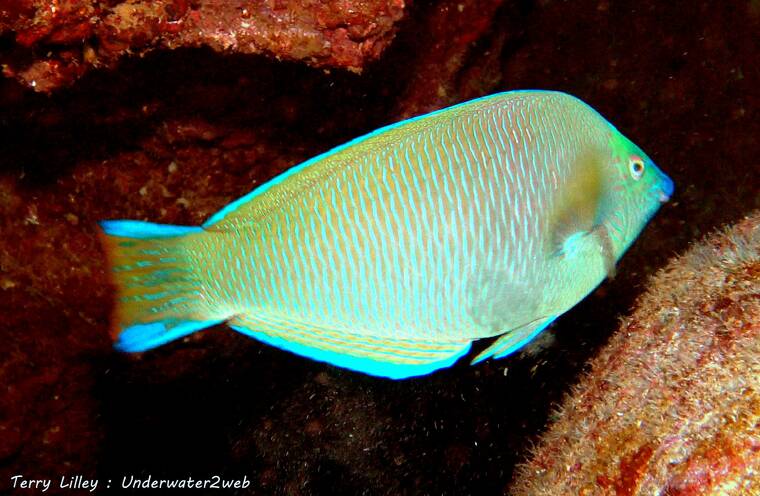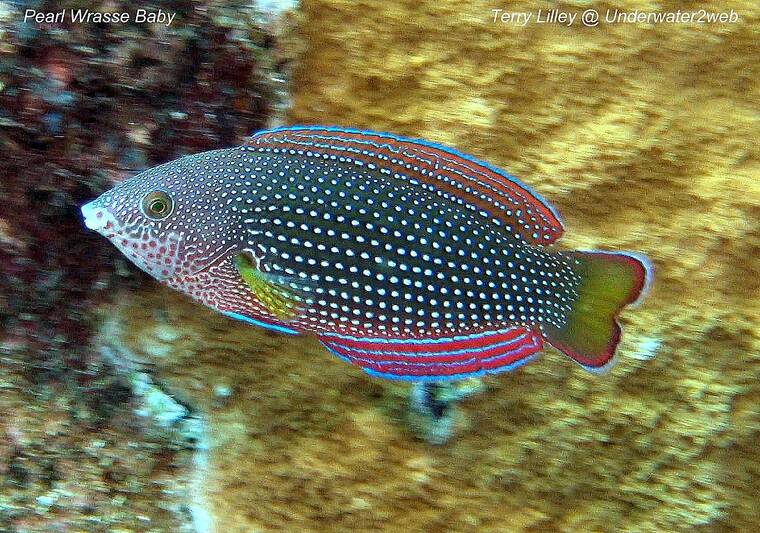Unless you really know your Hawaiian fish you would think that these two fish are completely different species. One is red and black with white dots that look like a string of pearls, and the other is blue-green with fine blue lines. They grow to about a foot long, and we normally see them on rocky reefs in shallow water.
Unless you really know your Hawaiian fish you would think that these two fish are completely different species. One is red and black with white dots that look like a string of pearls, and the other is blue-green with fine blue lines. They grow to about a foot long, and we normally see them on rocky reefs in shallow water.
‘Opule is a type of wrasse, and the Hawaiian name means “variegated in color,” which does describe the female pearl wrasse but does not describe the male, which is blue-green. Most all wrasse species hatch out as females, and some will convert to males when they mature for the purpose of breeding. We know this by doing DNA studies. But the life cycle of the pearl wrasse is still quite a mystery.
When a female wrasse converts from a female to male, you can see the color changes over a six-month period of time. Some specimens will look like they have the female and male colors blended together. This is not the case with ‘opule! When we see these fish while diving they look like a female or male, but nothing in between, so when and where do they go through a color change when converting from a female to a male? This is still a mystery.
We do know that the pearl wrasse lives close to shore in areas of giant, pounding surf. When the waves are small they feed on small invertebrate animals like crabs and brittle stars. But when the waves get big they are gone from the shallow water. We now believe that ‘opule may go into deep water to stay safe from the giant waves, and maybe they convert from females to males down deeper than we can scuba dive so we never get to see the color changes.
With the invention of the remote operational vehicles, scientists are now exploring the depths of the sea, and just maybe they will solve the mystery surrounding the pearl wrasse and where it goes to when the surf comes up. A few days ago I was diving with over 100 female pearl wrasse and three males at Sharks Cove in O‘ahu and the surf was flat. The next day I did a scuba dive in the same place and they were all gone, but the surf was still flat. By the evening the surf had come up to 10 feet, so ‘opule must have known the swell was coming in and left early for deep water! No need for watching the surf forecast on TV!
You can see ‘opule in action at www.underwater2web.com in my movie “The World’s Guide To Hawaiian Reef Fish.”
•••
Terry Lilley is a marine biologist living in Hanalei, and co-founder of Reef Guardians Hawai‘i, a nonprofit on a mission to provide education to protect the coral reef. To donate to Reef Guardians go to reefguardianshawaii.org.




